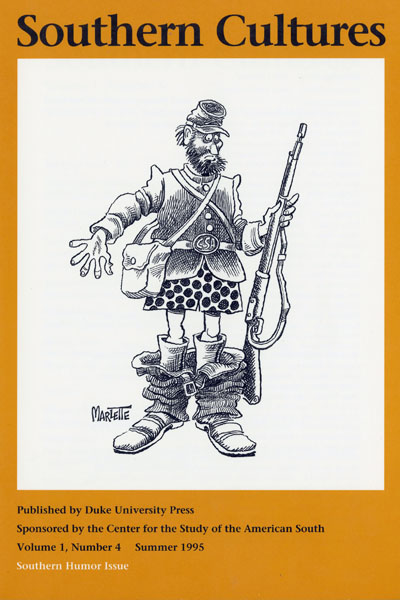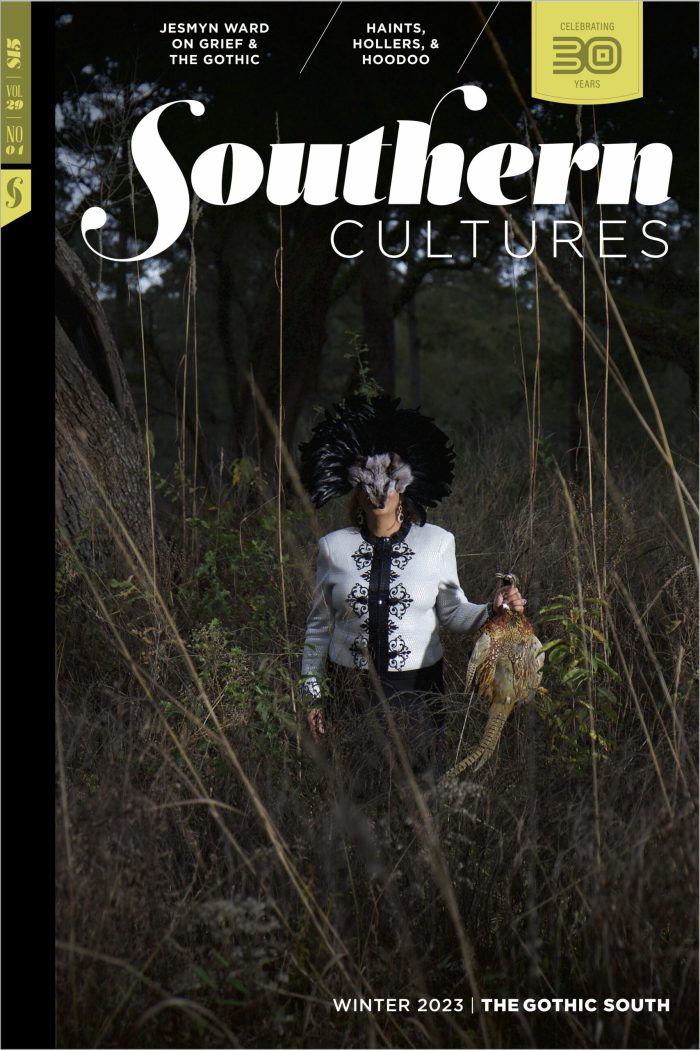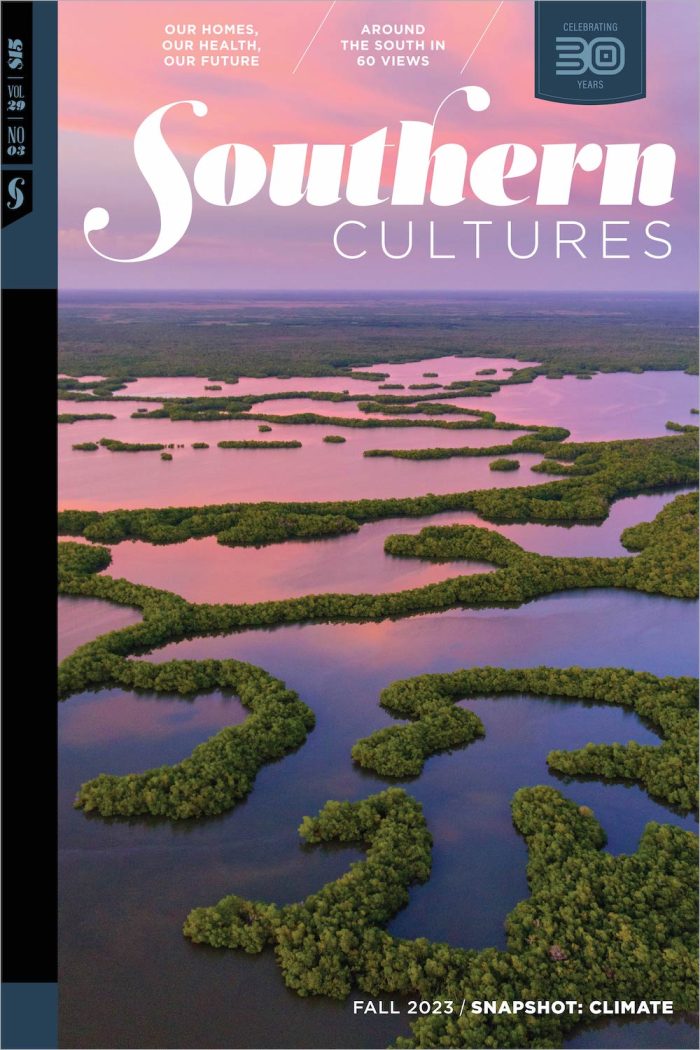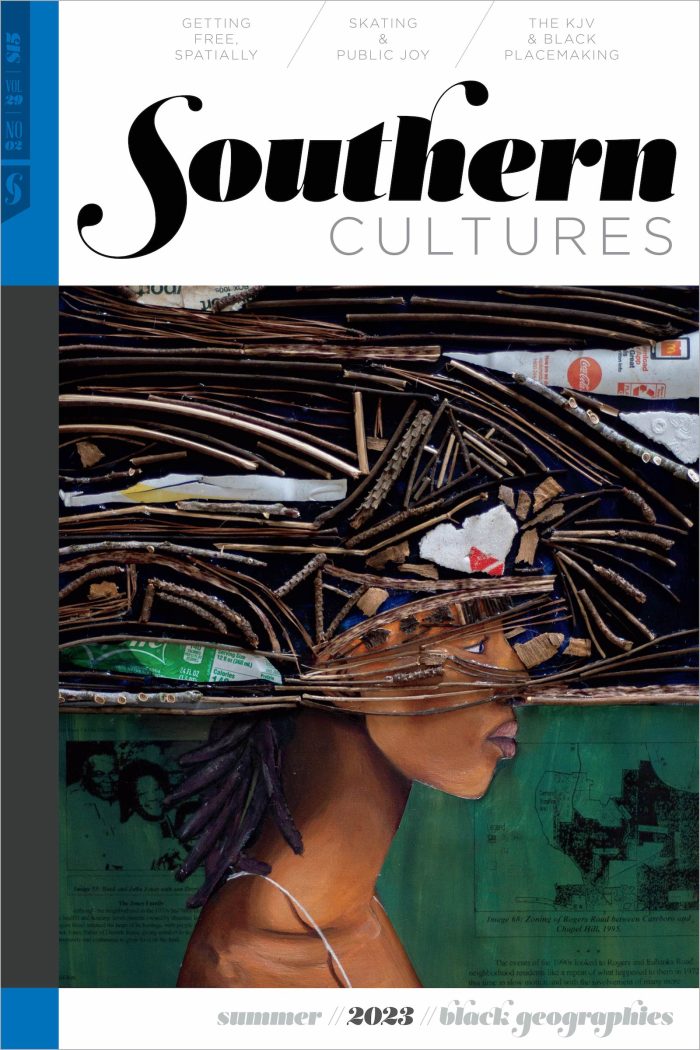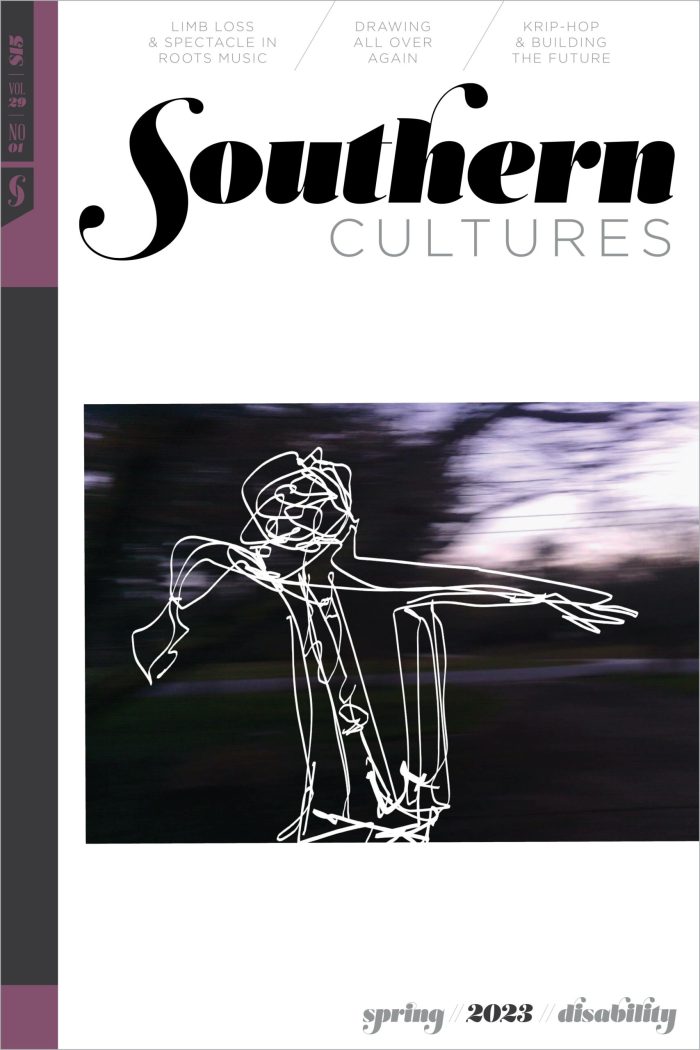BUY ACCESS
by John Shelton Reed
“Humor, in the end, seems to be one of those ‘idiomatic imponderables’ (in Edgar Thompson’s phrase) that continue to set the South apart from the rest of the country.” This is Southern Cultures‘s first “special issue”—that is, its first devoted to a single topic. The topic is southern humor, and the articles come from a »
BUY ACCESS
by Johanna Nicol Shields
Nothing about the South is harder to fathom than how European and African American traditions mixed in the lives of nineteenth-century people. Although some Black and white southerners have flatly denied cross-cultural influences, even those who want to find connections must dig deeply for evidence. In what follows, I suggest we mine a neglected source—southwestern »
BUY ACCESS
by William R. Ferris
“Folk humor is a key to both American culture and its literary tradition.” During his first visit in this country, Carl Jung noted the distinct style of American humor. Jung was struck by the “real American laughter, that grand, unrestrained, unsophisticated laughter” and felt it showed “remarkable vivacity and ease of expression. Americans,” he wrote, »
BUY ACCESS
by Trudier Harris
“For situations that are frequently life threatening, it is at times hard to imagine guffaws associated with them. Yet black people managed to create the essence of the blues—to laugh to keep from crying—in and about a land that was as much hell as it was home.” Black folks in the South. Black folks and »
BUY ACCESS
by Anne Goodwyn Jones
“‘What is that humor, you are wondering? Gentlemen, kindly cover your ears.'” Southern women’s humor. It sounds like a contradiction in terms, an oxymoron, like southern scrod or southern intellectual history. Men are the ones who tell jokes, after all; you don’t see men fall into confusion in the middle of a story and say, »
BUY ACCESS
by William Koon
“My point is not so much that a Mississippi story is better than a Michigan story, of course. Such is not always true, obviously. Besides, Eudora Welty could write circles around Ring Lardner on any terrain. But her region, so populous with talk, gives her an obnoxious advantage, one which she exercises with complete skill »
BUY ACCESS
by James C. Cobb
“As scholars and laymen alike struggle to determine what, if anything, constitutes the surviving essence of southernness, a close analysis of southern humor suggests that, contrary to our insistence on the seriousness of our endeavors, the search for new insights into the southern identity may well prove to be a laughing matter after all.” As »
BUY ACCESS
by Michael McFee
Norton, 1994 Why in the literary world hasn’t someone done this before? That is, put together a big old Bible of southern humor, songs and stories and poems and letters and memoirs and essays and other amusing utterances? Sure, various southern lit anthologies have included small congregations of humorists or satirists; and even Bennett Cerf, »
BUY ACCESS
by Mitchell Snay
University of North Carolina Press, 1992 Over the last few decades, historians have set forth a compelling interpretation of the nineteenth-century American South centered around the power and persistence of white planters and the oppression and subordination of African Americans. Joseph P. Reidy, in this compactly and convincingly argued book, examines the rise, fall, and »
BUY ACCESS
by James E. Crisp
Texas Tech University Press, 1993 Filled with ironies and incongruities, this book is a tale of epic dimensions about a few hundred rather obscure people—the Seminole maroons. These runaways (and their descendants) from the plantations of the southeastern United States first appear in Kevin Mulroy’s narrative as “slaves,” yet they were armed, relatively autonomous, and »
BUY ACCESS
by Thomas S. Edwards
University of Georgia Press, 1993 At an exhibition at the Mint Museum of Art in Charlotte, North Carolina, in 1986, I encountered a handsome alkaline-glazed pot turned in the Edgefield District of South Carolina by a slave potter named Dave. Sturdy and functional, the piece represented far more than just a useful storage vessel. With »
BUY ACCESS
by Rowena McClinton Ruff
University of North Carolina Press, 1994 A prolific and gifted writer, the late William G. McLoughlin, who died in 1992, left an invaluable contribution to our understanding of Cherokee culture. His earlier works, include Cherokees and Missionaries, 1789-1839 (1984) and Cherokee Renascence in the New Republic (1986). After the Trail of Tears, published posthumously, is »
BUY ACCESS
by Harry Eskew
University Press of Kentucky, 1993 Early nineteenth-century southerners usually learned choral music by attending singing schools taught by itinerant teachers, a number of whom compiled oblong tunebooks in easy-to-read shape notation. Of the several dozen shape-note tunebooks published before the Civil War, probably none was more popular than Southern Harmony by William Walker of Spartanburg, »
BUY ACCESS
by Grace Elizabeth Hale
University Press of Florida, 1993; University of Illinois Press, 1993 In 1897 in Alexandria, Virginia, an enterprising tobacco merchant placed an advertisement for his products in the most attention-getting spot in town—the lamppost above the body ofJoseph McCoy, an African American lynched for allegedly raping a white woman. Almost fifty years later in Tampa, Florida, »
BUY ACCESS
by Gwendolyn Midlo Hall
Louisiana State University Press, 1994 This book, which documents the stories of African Americans in a small South Carolina community, is as valuable as it is charming. Written by retired nurse Amelia Wallace Vernon who was born and raised at Mars Bluff, it relies heavily upon interviews with elderly African American residents who tell their »
BUY ACCESS
by Augustus Burns
University Press of Florida, 1993 In no area of American society did Franklin Roosevelt’s New Deal more radically alter the political and economic landscape than in the nation’s farm life. The myriad of programs enacted by the government “represented a new policy of government intervention in the business affairs of individual farmers,” as one observer »
BUY ACCESS
by David Evans
Norton, 1993 Mance Lipscomb (1895-1976) lived most his life in the Brazos River bottomlands in and around Navasota, Texas. He spent most of these yean as a farmer, sharecropping and renting land, and playing guitar and singing blues and other folksongs at “Saturday night suppers” in the community. His life changed dramatically in 1960, when »
BUY ACCESS
by Ruth A. Banes
University of Georgia Press, 1993 In his autobiographical Tristes Tropique ([1955] 1973) structural anthropologist Claude LéviStrauss lamented that societies appropriate for anthropological study were rapidly disappearing, partially because of contacts with outsiders, including anthropologists. This may have been true, but as Heider’s book shows, anthropologists have vastly expanded their approaches and are substantially redefining their »
BUY ACCESS
by Michael Kreyling
Louisiana State University Press, 1994 Once upon a time there was “The South,” and it was both historical and ideological. “Of the Mississippi the bank sinister; of the Ohio the bank sinister” one of the poetwizards of the South wrote, thus placing it simultaneously on the maps of history and of Mind. Into this magic »
BUY ACCESS
by Susan Kidd
University Press of Mississippi, 1993 Growing up in Georgia, we attended my father’s “country” church on occasion during the year and always on “First Sunday”—the church’s homecoming that fell on the first Sunday of each August. There were some differences between my father’s church and the “city” church (in a town with a population of »
BUY ACCESS
by Bennett L. Steelman
University of Tennessee Press, 1993 For much of the mainstream media, religious broadcasting evokes images of Jim Bakker, Jimmy Swaggart, Jerry Falwell, or Pat Robertson. Yet, as Howard Dorgan reminds us, an older, still lively folk-oriented tradition survives on Sunday mornings (and occasionally Sunday afternoons and Saturdays) on dozens of AM radio stations across the »
BUY ACCESS
by Caroline Mesrobian Hickman
Morris Communications Corporation, 1992. 246 pp. Cloth, $39.95; paper, $24.95. Augusta, Georgia, is home now to not only the most venerable of southern institutions, the Masters Pro golf championship but also to the Morris Museum of Art, which is devoted solely to southern painting. Communications magnate and sixth generation Augustan William S. Morris III established »
BUY ACCESS
by John Shelton Reed
“Do you ever eat grits? (If yes) How often do you eat them?” The national food of the South is celebrated in a Roy Blount poem and a Stan Woodward film—but who eats it? (Or is it “them”?) A 1991 Atlanta Journal-Constitution poll of 1,171 southerners found that roughly one in four eats grits “frequently,” »
BUY ACCESS
by Tone Blevins
“But first things first.” Yesterday a total stranger called me white trash. On my quiet suburban street walking my dogs. I guess the fact that it’s a middle-class neighborhood was the reason he left off the “poor.” Before being insulted for my family and my family’s family, I was alternately amused, shocked, and wary. But »
BUY ACCESS
by Peter A. Coclanis
“a pool, lighted tennis, Jacuzzi, and serene pond . . .” This collage or assemblage of place names, phrases, descriptions, etc.—“found poetry,” as it were—was taken directly from advertising copy scattered throughout a recent issue of Apartment Finder, a guide to rental housing in the Raleigh-Durham-Chapel Hill area. I “wrote” the piece one Sunday afternoon »
BUY ACCESS
by Caroline Mesrobian Hickman
Morris Communications Corporation, 1992 Augusta, Georgia, is home now to not only the most venerable of southern institutions, the Masters Pro golf championship but also to the Morris Museum of Art, which is devoted solely to southern painting. Communications magnate and sixth generation Augustan William S. Morris III established the museum in 1989, and this »
